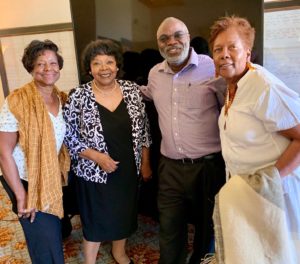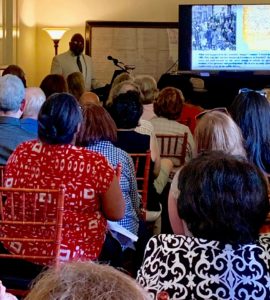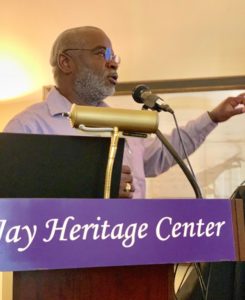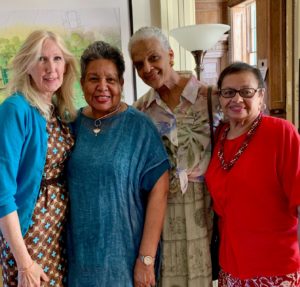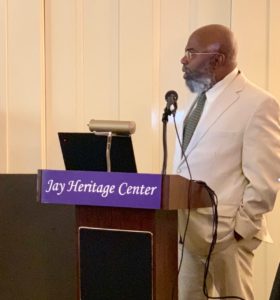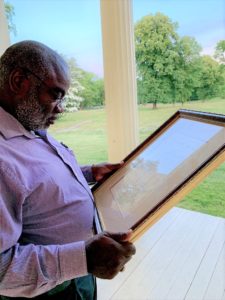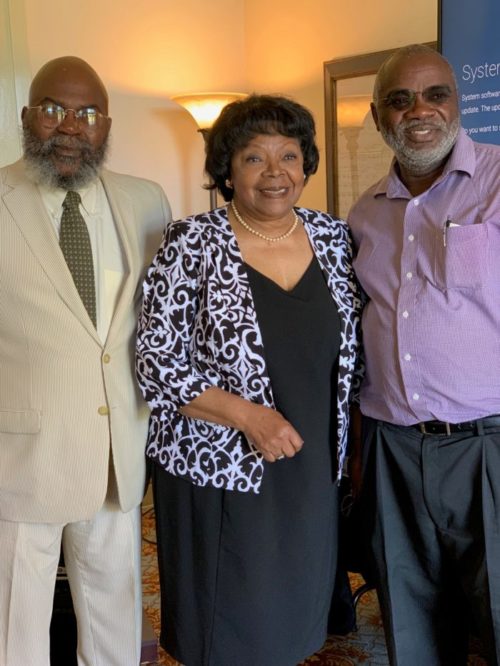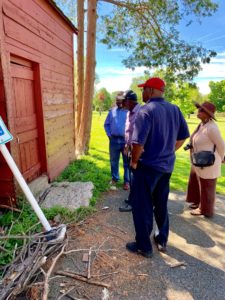
Preservation of African American history takes real scholarship, advocacy and partnerships. These places matter!
More than 90 individuals of every age agree and attended our program “Dwellings of the Enslaved and Freed in the City and Town of Rye” held on Sunday, June 9th at the 1838 Jay Mansion. Thank you to our superb speakers Joseph McGill, Jr., Founder of The Slave Dwelling Project and Dr. Larry Spruill, of Morehouse College for two vibrant, empowering presentations and discussions.
Earlier in the day, both guest speakers took the time to visit the Slave Quarters at the Bush-Lyon Homestead in Port Chester along with the African American Cemetery on North Street.
Mr. McGill’s talk focused on preserving and interpreting the physical buildings and historic settings that have been dismissed by many as mere footnotes in history. McGill has slept overnight at more than 100 cramped, sometimes lightless dwellings that are tangible reminders that their inhabitants were deprived of freedom as well as the emotional, mental and sensory liberties that went with it. He advocates to protect these structures and their accompanying narratives. Mr. McGill spent the night at the 1838 Jay Mansion where a once enslaved man named Caesar Valentine slept and worked for the Jay family after he was manumitted in 1824.
Dr. Larry Spruill guided the audience through his painstaking and illuminating research into the real lives and genealogy of an Eastchester couple, Rebecca and Benjamin Turner. His presentation was a through and riveting account of the process by which he pored over receipts and photos to put flesh upon the skeletons of their existence. He explained how and he and other colleagues are “committed to assuring that new documentary evidence be excavated from local and county archives.” It is his belief that the tens of thousands of forgotten African Americans and impoverished immigrants “are entitled to the dignity of resurrected lives.”
Our shared hope is to educate our community – volunteers, government officials and private citizens – about ways they can help save and interpret extant structures like the Slave Quarters as well as cultural artifacts and the historic paths, viewsheds and landscape at the Jay Estate. The stories of the enslaved and freed women, men and children who lived and worked at these places are too important not to protect the physical touchstones of their existences. Read more about what we are doing in partnership with others.
We were joined by Joan Grangenois-Thomas and Dave Thomas founders of the Friends of the African American Cemetery, Inc., Barbara Edwards, Chair of the African American Advisory Board of Westchester County, Westchester ACT-SO Chair, Ingraham Taylor and members of the American Women of African Heritage including their President, Francine Shorts.
“I look forward to continued conversations about Ceasar Valentine and the African-American community at the Jay property and town of Rye. I appreciate your leadership in making this weekend a complete success and catalyst for cooperative work on County Africana history.” said Dr. Larry Spruill.
Listen to a podcast featuring Joseph McGill, Jr. here
